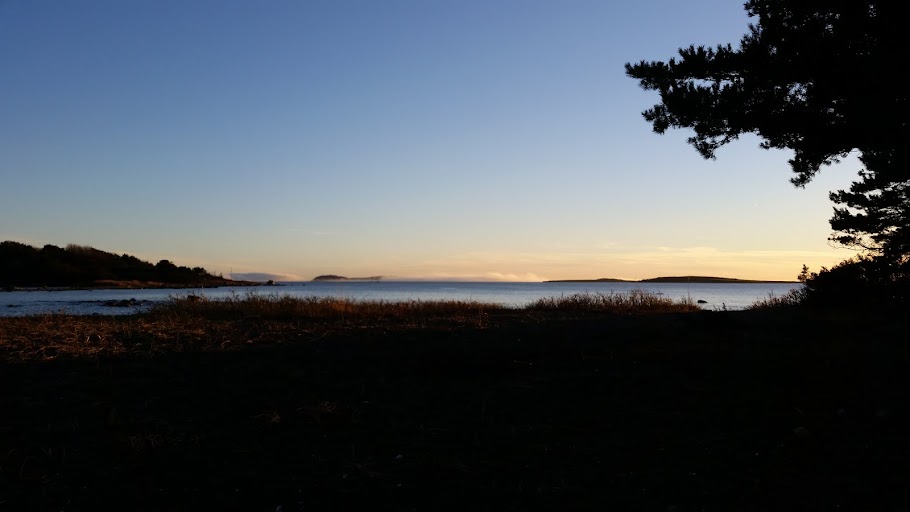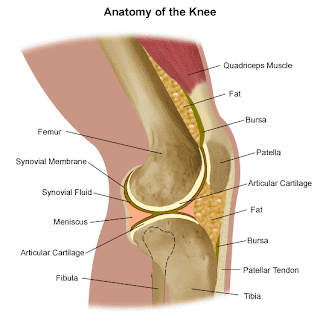It appears that I suffer from what's referred to as "Runners knee". A condition of which the pain is localised around the knecap, becomes gradually worse over time and is exacerbated by running long distances. Walking steps causes discomformt as well as squatting and sitting with the knee bent for longer times. The condition of ligament and bones in this condition is abnormal, causing the pain.
Runner's knee, also known as patellofemoral stress syndrome, is a condition characterized by the kneecap rubbing against the thighbone (femur) when moving.
There may be different causes to this injury such as:
1. Running shoes:
does not limit ankle-pronation
2. Training errors
training too hard, too far, too soon, always running on the same side of the road, interval training and racing too often
3. Training surfaces:
too much running on hard surfaces
4. Biomechanics:
flat feet, high-arched feet, increased quadriceps(q).angle at the knee, redusced ankle-flexibility,
Measures to correct this injury are:
1. Anti-pronation shoes
2. Orthotics
Both measures are directed towards correcting biomechanical abnormality that causes the injury.
The advice is to try out these measures in prioritised order.
Well, that is as far as the general theory goes.
Facts about my situation is this:
1. Running shoes:
I've used 5-6 different shoes, but gravitated towards lighter shoes(competition shoes) of around 0,2 kg.
The first time I noticed pain in my knees was during Thueringen Ultra in the beginning of July. At the beginning of the third quarter I made more use of Mizuno Wave Ronin and the pain disappeared. Before that I'd been using Puma Concinnity extensively. After making that change I didn't notice any pain again before week 42.
The change when it comes to shoes is Saucony Kinvara which I bought 9.9.10 and have runned approximately 150 km since then. They may be the cause for this injury
2. Training errors:
I've been increasing my amount of training substancially from the first to second and third quarter. In addition I have done very long training session. This may have caused some of this, but I since the symptoms have occurred after changes of shoes I don't think that can be the cause of this injury. It doesn't reduce the injury to run long runs, but it's not the cause of it.
Initial measure:
I need to try out using a different shoe again that reduces pronation. I'll buy a pair of shoes first thing tomorrow and try out this approach during the next month. In addition I'll run shorter runs the next weeks and make use of ice the coming week to cool down the injured area which is mostly the right knee.
If this doesn't to work out I'll try orthotics as my next measure.


Eldre, men interessant innlegg. Jeg opplevde det samme, løperkne, etter høstens NUC. Årsaken var nok ganske enkelt at jeg hadde for svakt treningsgrunnlag før NUC, og ikke ga meg selv nok restitusjon etter NUC. I rusen som ultradebuten inspirerte ble det mye fartslek ned åsene ved Harestua, og det var i en lengre nedoverbakke jeg først begynte å kjenne ømhet i knærne.
SvarSlettJeg hadde i tillegg kjøpt nye sko etter NUC. NUC løp jeg i New Balance Minimus Trail, veldig lette sko, med god kontakt med underlaget, og som jeg liker veldig godt (men de har gitt meg litt gnagsår hvis jeg har forsøkt å løpe barbeint i de). Etter NUC kjøpte jeg Solomon S-Lab Sense på tilbud. Skiftet kan naturligvis ha spilt inn, men jeg har fortsatt å løpe i Solomon-skoene etter jeg ble kvitt skaden, og foretrekker disse skoene nå vinterstid (New Balance-skoene er litt glatte på vått underlag).
Jeg gjorde ikke annet enn å la være å løpe en stund, men det ble noe "hiking" i stedet. Det var ikke før i desember at jeg regelmessig løpte igjen, og nå løper jeg flere km i uken enn jeg noen gang har gjort. Jeg kan fortsatt kjenne det litt, i form av stivhet og noe ømhet, etter langturer, eller mindre flate turer. Jeg forsøker å trene litt core-muskulatur, strekke og den slags, men kan ikke si at jeg er så flink å holde det ved like (er jo så kjedelig, mye kjekkere å komme seg ut i naturen!). Jeg sliter også litt med stive hofte, som jeg tror kan ha en sammenheng.
Hei Christian,
SlettTakk for kommentar.
Det var denne skaden som for alvor fikk meg til å slutte med asfaltløping og bruke tiden i terrenget-grus kan til nød gå rent unntaksvis. Min erfaring er at sko som er tilpasset den enkelte og innleggssåler som er egnet til løping er gode virkemidler for å unngå skader. Dette må suppleres med rolig progresjon av mengde og det er viktig å lytte til kroppen(beina) for å unngå skader. God alternativ trening som har fungert for meg er styrketrening(frivekter og basisøvelser), samt skiløping og sykling.
Jannicke